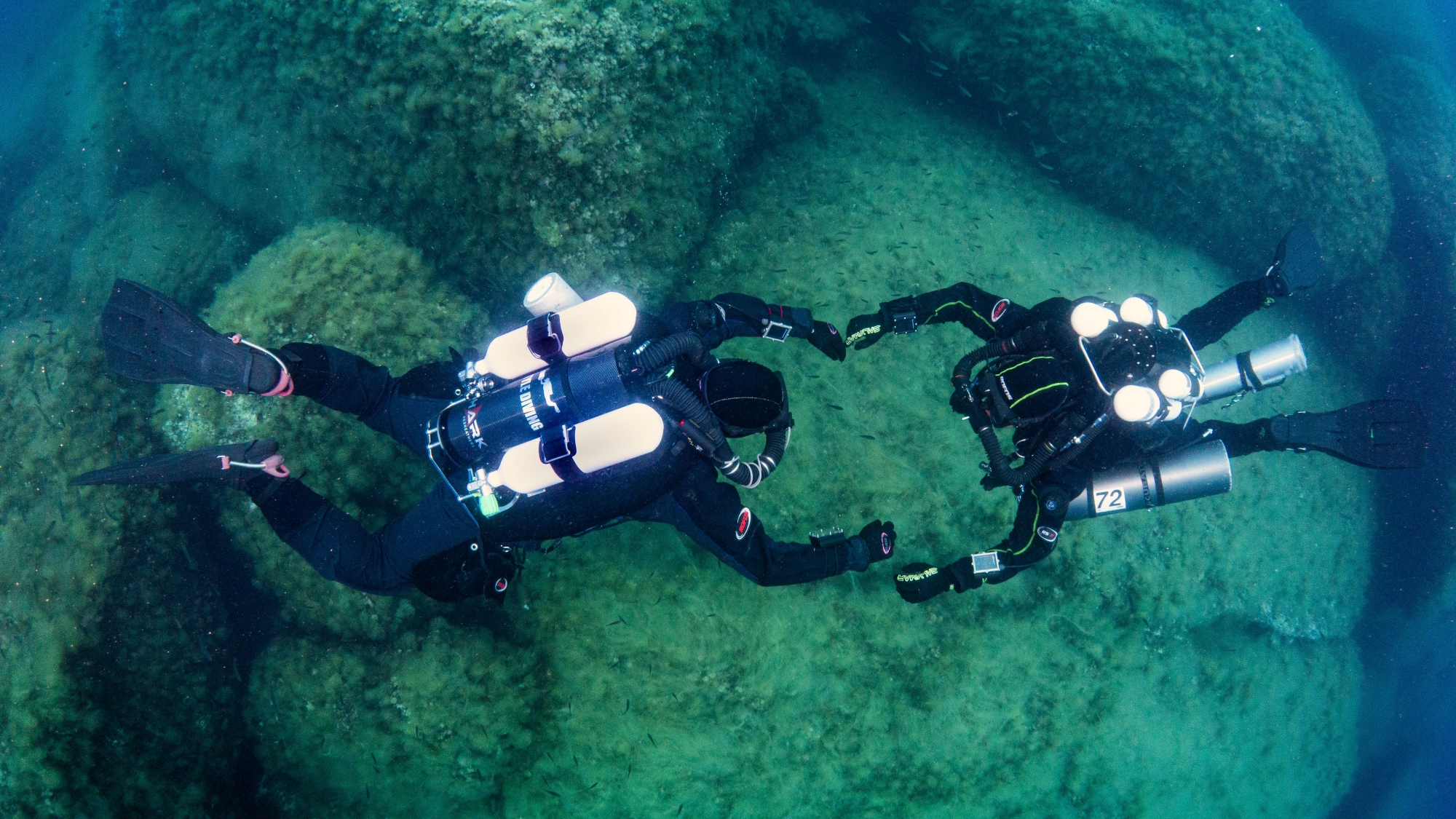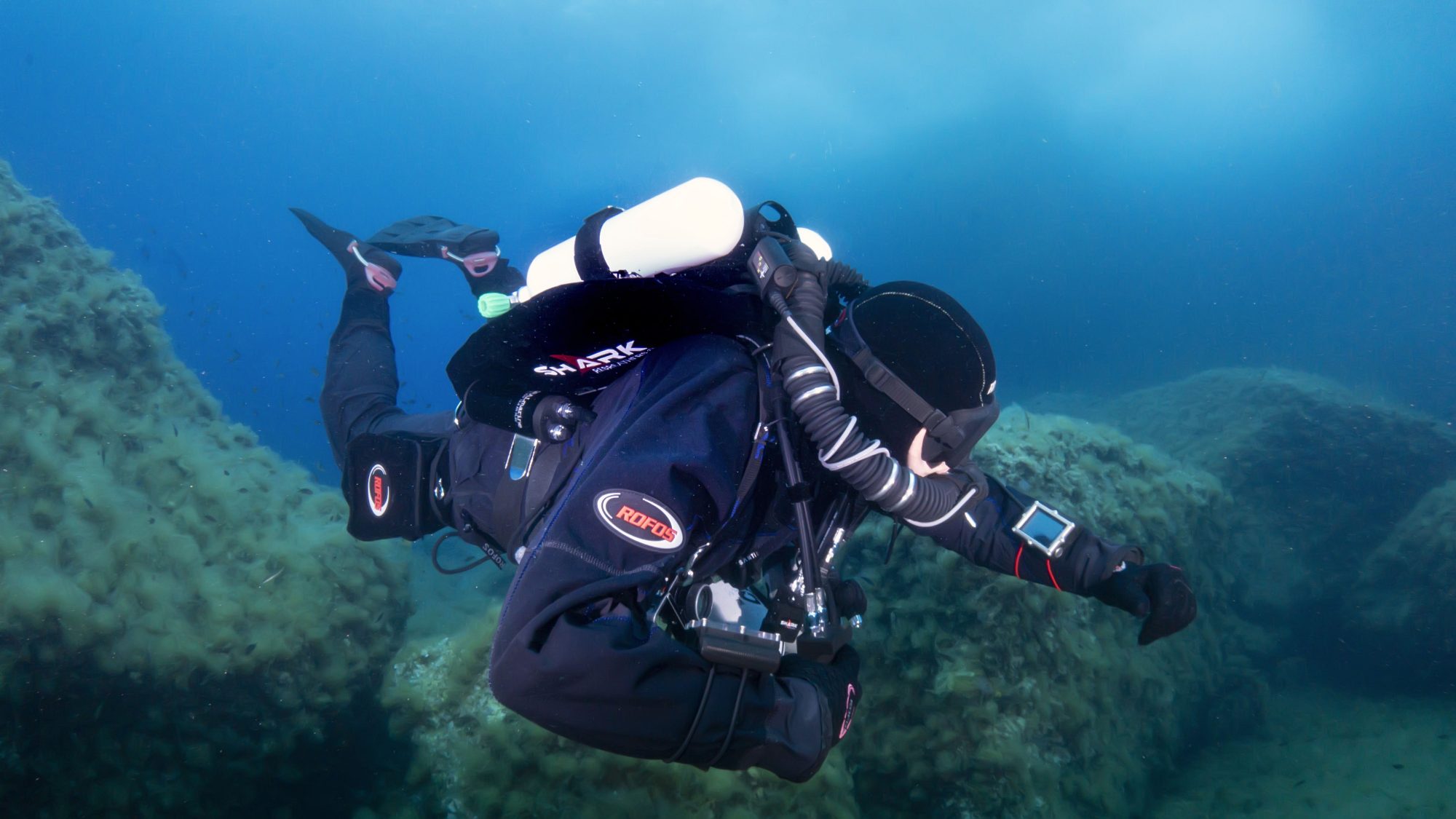
What makes the Shark different from other rebreathers?
The main design features of the Shark include the integrated and protected rear lungs which, thanks to careful study of gas dynamics during the design phase, guarantee one of the lowest breathing efforts on the market. Furthermore, the introduction of oxygen and diluent, both manually and automatically at the same point, i.e. inside the expiratory lung sac. This allows the gas to mix as it passes through the scrubber, before being analyzed by the oxygen sensors. From that moment on, no other gas can enter the circuit up to the diver’s mouth, so he is sure that the mixture he is breathing is the one being analysed.
The Shark is a relatively recent product, which takes advantage of the latest technologies and knowledge on the subject.
It is built in Belgium and is CE certified up to 40 meters with air diluent and up to 100 meters with helium-based diluent, this allows the sports diver, after the necessary experience and training, to continue towards technical diving.
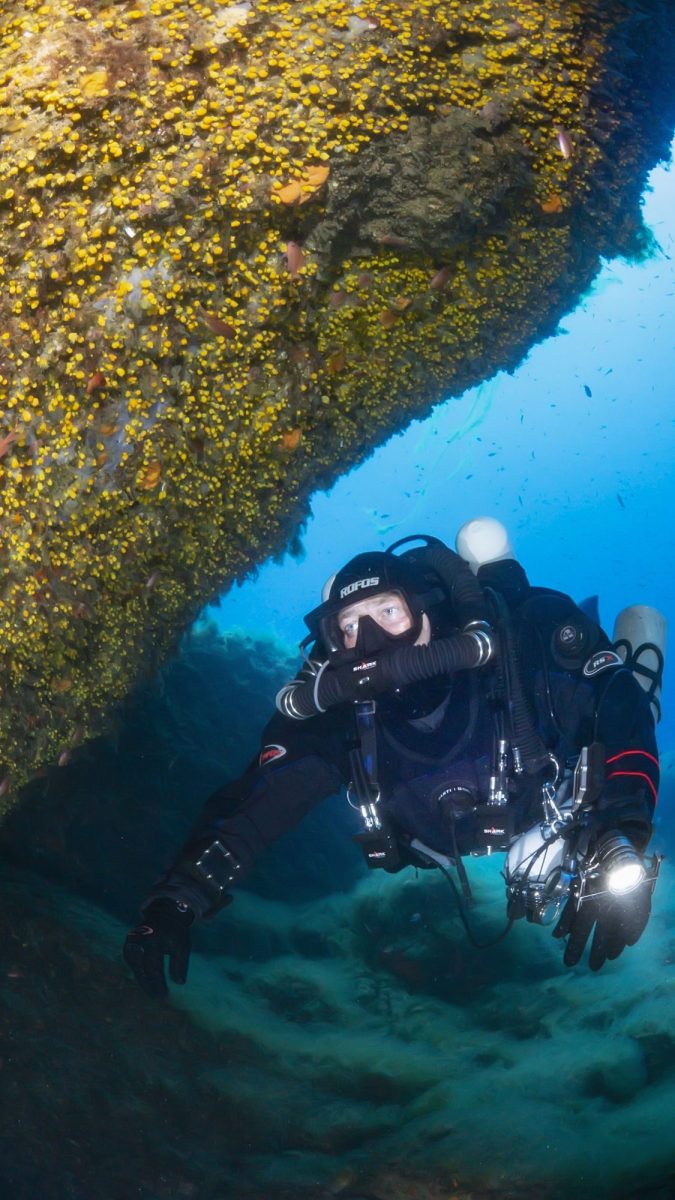
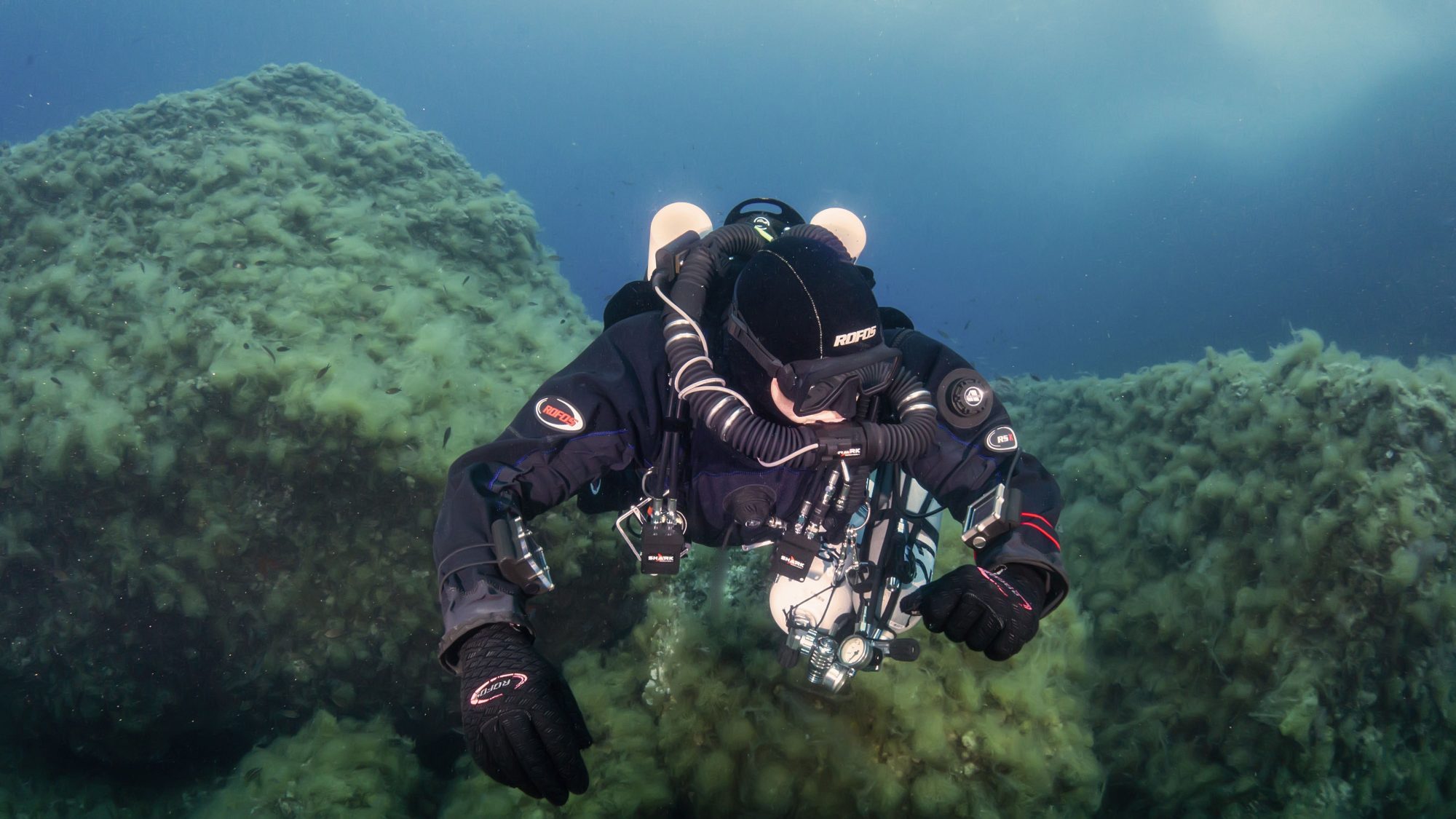
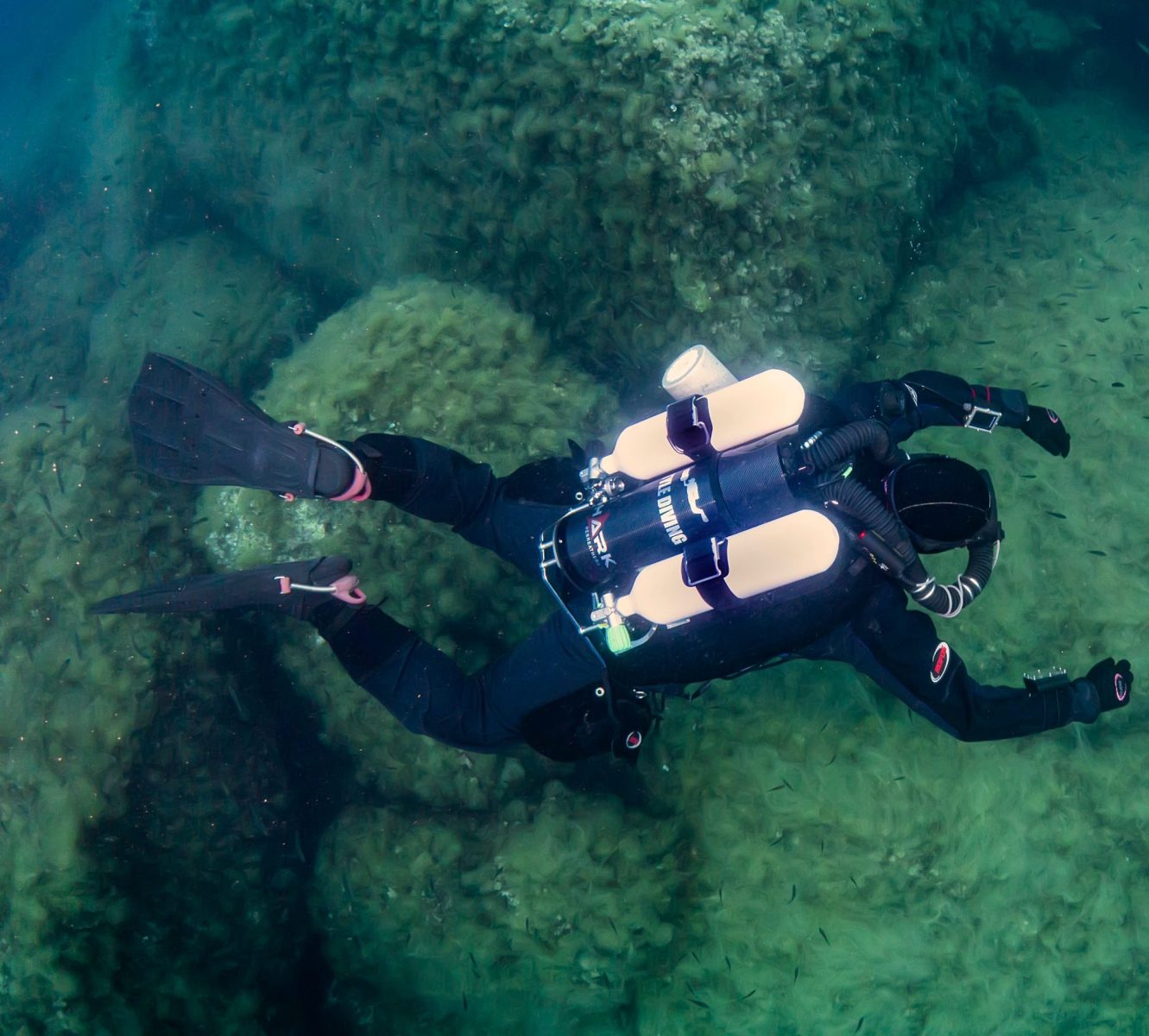
The COURSE lasts on average 5/6 days with a minimum of 8 dives of approximately 1 hour each.
The cost of the course may vary depending on the level required
The course includes absorbent material, teaching material, practical and theoretical training and training if the course is successfully passed
To this we must add the costs of diving, with diving and gas, and depending on the location chosen, the travel costs incurred by the instructor are divided among the participants.
If you are not already rebreather certified, per manufacturer requirements you will receive a disabled unit with a critical component needed for the dive shipped to your instructor, or you can have the entire unit delivered directly to your instructor’s location. course.
The Shark rebreather is available in the hybrid version where a solenoid is added to the sonic flow that automatically injects oxygen using Shearwater Research’s electronic ppO2 setpoint controller.
All Shark units include a Petrel 3 Shearwater main computer for ppO2 monitoring and dive data management, but technical divers should strongly consider adding a second backup system such as a HUD or NERD.
Annual ordinary maintenance costs amount to approximately €300 per year. Basic maintenance is taught during training and the costs of consumables such as sensors, lubricants and disinfectant are considered. Maintenance of the two first stages is expected to be annual and the entire unit has a factory service interval of five years. All non-ordinary maintenance must be carried out by an authorized service centre.
The recommended consumables are: molecular absorbent molecular products of loose granular carbon dioxide Sofnolime 797, Steramine or similar for sanitizing the breathing circuit, O2 compatible lubricant Tribolube 71 for O-ring seals and Shark brand Molex oxygen sensors.
Shearwater electronics require one AA battery and one 9V Energizer or Duracell battery.
As with all rebreathers, the largest consumable cost is the CO2 absorbent. A full charge of the scrubber, 2.5kg, costs around €15 and can generally be used for several dives. There are other minor costs such as gas refills and batteries.
The duration of absorption if only the immersion time is taken into account is approximately 3h for water temperatures above 15°C.
The scrubber contains 2.5kg of absorbent, which is prepared by the diver.
The Shark’s design includes several features to minimize the risk of water entering the breathing circuit, such as the expiratory lung, and the support that keeps the scrubber away from the bottom of the canister keeping it away from any water or moisture present inside of the circuit.
During the training you will learn how to set up the unit and verify its health using a pre-dive checklist.
The rebreather accepts 2L or 3L cylinders using standard 5/8″ DIN valves for diluent and M26 valves in accordance with CE regulations.
Smaller divers may prefer 2-liter tanks to reduce overall weight. 2L carbon fiber tanks are available which reduce the total weight to a minimum, excellent for when diving in tropical waters, such as thin wetsuits, but for diving in temperate waters you must add weight to compensate for the greater buoyancy and buoyancy in the water.
The Shark comes as standard with a very good quality adjustable harness and a Halcyon rear bag suitable for the use of the unit. However, the Shark can mount any steel or carbon pouch, harness, and backplate system that mounts using the 11-inch off-center holes. Using a different bag and harness can change the position of the unit on the diver’s back and therefore can change the diver’s work of breathing.
For information contact Marco Alberti on +39 348 406 2144
